What is a heat exchanger unit?
The heat exchange unit is composed of a heat exchanger, a temperature control valve, drain valve group (heat medium for steam) a complete composition of heat circulation pump, electric control cabinet, base, piping, valves and instruments such as exchange station.
If the heat exchanger unit fails, how do you decide what went wrong? An antidote against the disease can relieve risks, seven today brought 16 of the heat exchange unit fault, not to look at!
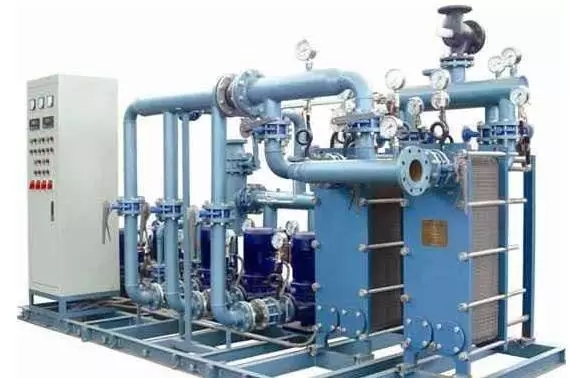
1-- Q: how to determine whether the heat exchanger is blocked?
If the pressure difference between the side supply and return water or the inlet and outlet pressure difference of the two side heat exchanger is over 0.15MPa, and the temperature of the two water supply is not hot, please check whether the heat exchanger is blocked. Test method of heat exchanger is washable.
2--: what are the reasons why the system is not hot? How should it be analyzed?
The two water supply temperature is low, not hot, the analysis has the following reasons:
The primary side water supply flow is insufficient:
Check all the valves of the first side water supply and return water pipes are all open.
Check whether the water supply filter is blocked.
If the valve is all open, then determine the pressure difference between the supply and return water, if the pressure difference is less than 0.05MPa, please increase the flow of Thermotics Inc. If the pressure difference between the side feed back is greater than 0.15MPa, please clean the heat exchanger.
The two side system is not smooth:
Check all the valves of the two side supply and return pipe all open.
Two side filter clogging.
The pressure difference between inlet and outlet of the two side heat exchanger is higher than 0.15MPa, and the heat exchanger is blocked. Please clean the heat exchanger.
3--: the system has pressure, and the pressure gauge shows 0. What's the matter?
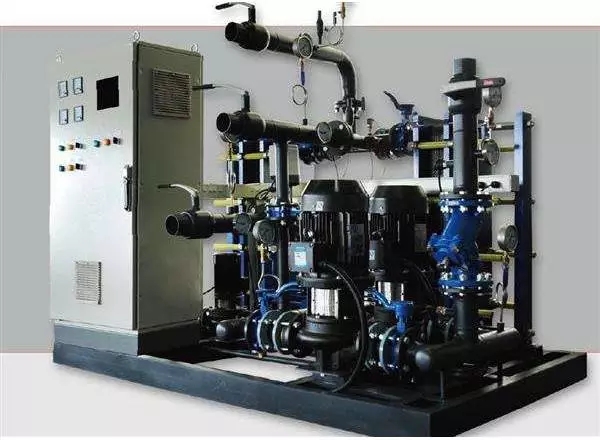
If the needle valve of the pressure gauge is closed, the pressure gauge will always be 0. In the operation of the system, to ensure that all the pressure gauge matching needle valve is in full open state.
4--: what happens to the two side overpressure? What about overpressure? How to prevent the overpressure of the two system?
When the initial operation of the system, the two temperature is relatively low, in the replenishment to the fixed pressure value, with the temperature continues to rise, the pressure of the two system will also rise, at this time, one is to exhaust more, two is to discharge. The drain valve of the two return pipe can be opened when discharging. When the system temperature is stable, the pressure will not rise again.
5-- question: how to determine if the filter is plugged?
If the temperature difference between a water supply temperature and a return water temperature is very large, the high temperature water is more than 45 degrees, the low temperature water is more than 30 degrees, and the two water supply is not hot, please check the water supply filter is blocked at this time.
If the temperature of the two water supply and the two return water temperature difference is great, the floor temperature difference is more than 15 degrees, the radiator heating temperature difference is more than 30 degrees, and the pressure difference is very small, please check the two backwater whether the filter is blocked.
6-- ask: the unit fault indicator light, that is, yellow indicator lights on the control cabinet, how to do?
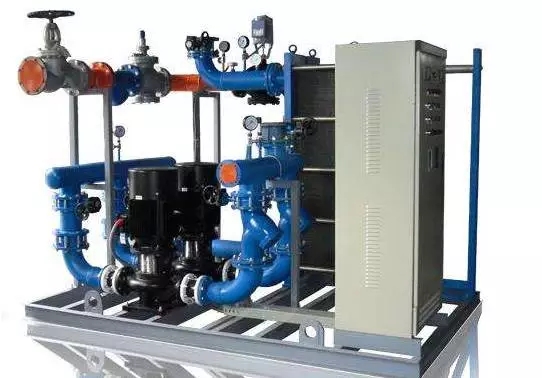
The fault indicator light shows the corresponding water pump overload, the motor current exceeds the rated current, and the thermal relay plays a protective role. It can be reset by pressing the reset button on the thermal relay. Note that the heat relay must be cooled before it can be reset, otherwise the reset is invalid.
7-- ask: how can the system fill the water? The pump keeps running, and the pressure doesn't rise.
If the water pump is running, and the pressure is always not set, please exhaust the system. Poor water recharge is mostly caused by system gas collection.
8-- ask: frequency conversion replenishment is not automatic, the inverter does not start what is the reason?
Check whether the switch is in the frequency conversion or automatic position, must be in the frequency conversion or automatic position, the inverter can work normally.
Check the starting button of the make-up pump, whether it is in the running state, only when the green indicator of the make-up water pump is turned on, the frequency converter can work normally.
The operation of the disk check if the alarm code converter, beginning with F digital fault code, beginning with R digital warning warning code, code does not affect the operation of the frequency converter, and the fault code appears, must reset the inverter, the inverter can continue to work. If there is a fault code, press the EXIT key on the top left corner of the inverter operation panel.
Must above three conditions are normal, frequency conversion replenishment to normal work.
9-- ask: how to deal with the two water supply when the temperature is too high?
If the user feels the water temperature is too high, the room is too hot, the best way is to turn off the small side of the water supply valve. Attention should be paid to the small side water supply valve, and the backwater valve is in full open state.
10--: what's wrong with pump noise?
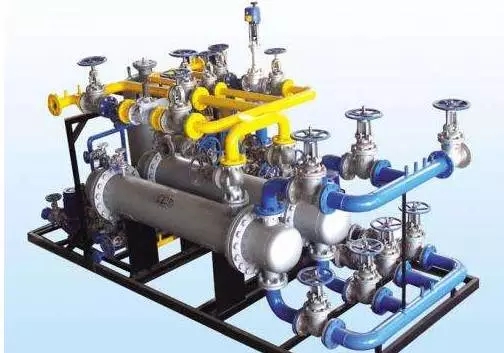
When the unit runs from one to two heating periods, due to mechanical wear, the noise will become larger, check whether the fan cover is loose, and exhaust the pump. The pump must be regularly maintained, add lubricating oil, replace the wearing parts and so on.
11-- ask: replenishment pump frequently replenishment, stop after the rapid decline in pressure is what happened?
If the unit has normal operation for a long time, the phenomenon of frequent replenishment, please do the following inspection:
Check whether the two side system has pipeline or valve leakage and so on.
Check whether the check valve in front of the water supply pump is not tight, the phenomenon of inverted flow. Check method is to stop the water pump, turn off the water pump inlet valve, and then open the outlet of the water pump outlet valve, if there is water discharge, indicating that the water pump before the check valve is not strict, need to change.
12--: what happens when you start a circulating pump and another circulating pump is rotating?
During the operation of the unit, if a circulating pump is opened, another circulating pump is turned and reversed, indicating that the check valve is not tight before the pump is opened, and the check valve needs to be replaced. If it can not be replaced temporarily, please stop the butterfly valve before and after the pump, to prevent water backflow.
13-- Q: if on the unit, ifConfiguration of canned motor pump, how to determine whether the pump steering is correct?
The most reliable way to judge whether the canned motor pump is correct is to measure the current with a clamp ammeter. The positive current is greater than the reverse current.
14--: what happens when the pump starts running and the indicator lights up, and the pump doesn't work?

Check the circuit breaker in the control cabinet and keep the circuit breaker in suction and state.
15-- Q: the pressure difference between the inlet and outlet of the circulating pump exceeds the head of the circulating pump. What's the matter?
The pressure difference between the inlet and outlet of the circulating pump represents the resistance value of the whole system. For example, the inlet pressure of the circulating pump is 0.25MPa, and the outlet pressure of the circulating pump is 0.55MPa, indicating that the resistance of the whole system is 0.3MPa, and the resistance includes the resistance of the unit itself. If the pressure difference between the inlet and outlet of the circulating pump has exceeded the head of the circulating pump, it shows that the two water supply pipeline has serious blockage phenomenon, which leads to the high pressure of the two water supply. The inlet and outlet pressure of the circulating pump must not exceed the head of the circulating pump.
16-- Q: what is the difference between the temperature difference between the water supply temperature and the return water temperature?
The smaller the temperature difference between the water supply temperature and the return water temperature, the greater the flow of the system and the more smooth the system. On the contrary, if the temperature difference between the water supply temperature and the backwater temperature is greater (exceeding the rated value), the system flow is small, and the system circulation is not smooth enough. At this point, check the filter and heat exchanger and the corresponding valve of the pipeline is blocked.
Explanation of special terms for heat supply unit
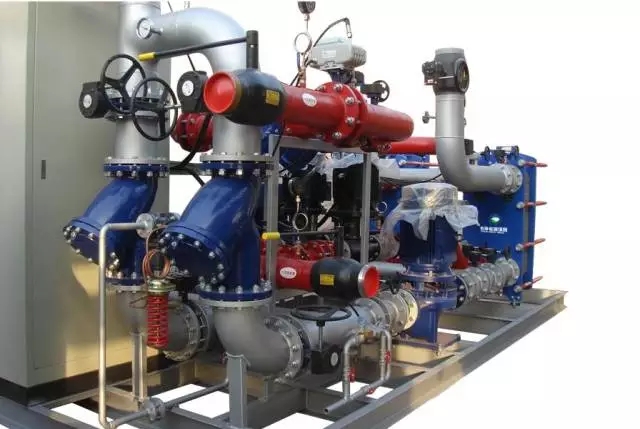
Primary side: a heat source, such as hot water or steam in a boiler room.
The two side: refers to heat users, such as floor heating, radiator, central air conditioning and other heat users.
Water supply: either on the primary side or the two side, the hot water is water supply, that is, the pipeline with high temperature is water supply.
Backwater: no matter the primary side or the two side, the cold water is the backwater, that is, the pipeline with low temperature is backwater.
High temperature water: the temperature is higher than 100 degrees of water, the national standard is 130/80 degrees, that is, the water supply temperature is 130 degrees, the backwater temperature is 80 degrees.
Low temperature water: temperature below 100 degrees of water, the national standard is 95/70 degrees, that is, the water supply temperature is 95 degrees, the backwater temperature is 70 degrees.
Description: high temperature water and low temperature water are defined for primary side system.
Display rule of normal operation parameters of unit
The water supply temperature is higher than the backwater temperature, and the water supply pressure is higher than the backwater pressure.
The difference between primary water supply pressure and backwater pressure should be greater than or equal to 0.05MPa.
The difference between inlet and outlet pressure of the two side of plate heat exchanger should be less than or equal to 0.15MPa.
If the primary side is high temperature water, the temperature difference between water supply temperature and backwater temperature can not be higher than 40 degrees.
If the primary side is low temperature water, the temperature difference between water supply temperature and backwater temperature can not be higher than 25 degrees.
If the radiator is heated on the two side, the temperature difference between the water supply temperature and the return water temperature can not be higher than 25 degrees.
If the two side is floor heating or air conditioning heating, the temperature difference between the water supply temperature and backwater temperature can not be higher than 14 degrees.
Source: chemical 707, heating and refrigeration;

Official public micro signal






